With the WSL resuming for a new season today, it promises to be bigger and better than ever. After a successful Women’s World Cup, many fans were excited to watch the World Cup stars return to their respective clubs. While the NWSL stars returned almost immediately, the WSL stars had some time off and are now preparing for another year of football. The USWNT stars stole the show but many European based players stood out and caught the attention of many onlookers.
Kosovare Aslani, Nikita Parris, Amandine Henry, and Lucy Bronze all contributed significantly to their countries success. While some made big transfers to top European clubs, one player hoping to stake her claim as one of the world’s best is the Netherlands’ Daniëlle van de Donk.
This scout report will use tactical analysis to elaborate on the Dutch midfielder’s strengths and weaknesses and provide an in-depth tactical profile.
Tactical Analysis – Daniëlle van de Donk
Danielle van de Donk is a 28-year-old Dutch central attacking midfielder plying her trade in the WSL for Arsenal Football Club. The midfielder moved to Arsenal from Göteborg in 2015 making 60 appearances scoring 21 goals in the process. Her career has taken a nomadic path having played for clubs such as Willem II, VVV-Venlo, and PSV Eindhoven.
Van de Donk can be typified as a hard-working attacking midfielder who prefers playing in the number 10 role but is equally comfortable as a central midfielder or out wide on the right. She played in multiple positions for the Netherlands at the World Cup, having been deployed in the aforementioned positions making her very tactically flexible. She also possesses a wide range of passing making her a creative force that unlocks compact defences as well as contributes with a good goal return.
Intelligent movement & vision
From an attacking perspective, Van de Donk has been outstanding for club and country. While she has scored a multitude of goals for Arsenal, her overall influence for the Netherlands cannot be understated. She is their main creative instigator and passer. Van de Donk’s ability to create space through her movement, positioning, and passing comes from her exceptional vision.
The Arsenal number 7 identifies gaps in opposition defences that put her teammates in behind. Van de Donk attempted 4.09 dribbles per 90 with a 52.4% success rate proving her credentials as a proficient dribbler. This combined with her interceptions and recoveries makes her a well-rounded attacking midfielder.
Van de Donk looks to station herself between the lines of midfield in order to commit defenders towards her position, opening up gaps in behind for her to drive into and play her teammates through.
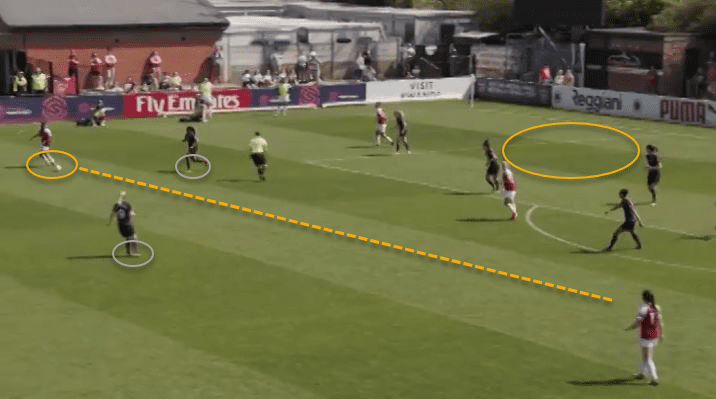
Playing with a centre-forward like Vivianne Miedema, who looks to play across the front line allows Van de Donk the opportunity to play line-breaking passes by attracting players towards her and passing into the newly formed gaps in behind. For Joe Montemurro’s tactics, this could be extremely useful as it opens up space for Jordan Nobbs, Miedema, and Beth Mead.
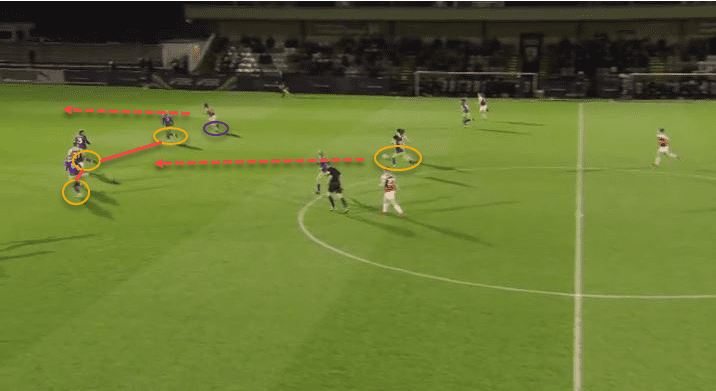
As the graphic above illustrates, Van de Donk picks up possession in midfield and drives towards the opposition defence. The entire team starts dropping deep as a unit and has one midfielder tracking the number 7’s run. Notice the compactness of the opposition’s defensive line which has created space for Arsenal to attack down the wide areas. The circled player could drag the full-back out of position and create an opening for Van de Donk to dribble through.
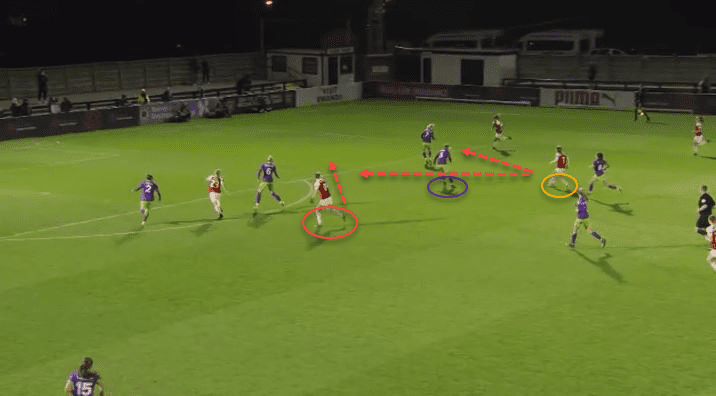
With no player closing down Van de Donk quick enough, it forces the centre-back to step forward to try and contain the attacking midfielder. However, this opened up space for Miedema to drive into and position herself perfectly for Van de Donk to thread a killer pass through. Even if the other centre-back were to step across and stop the Dutch centre-forward, Mead is in an advantageous position to pick up a potential pass.
Fellow Dutchman Miedema plays with Van de Donk for both Arsenal and the Netherlands national team and the pair have a near-telepathic understanding of one another. Miedema is a dynamic striker that plays across the front lines with superb movement and positioning that drags defenders out of position.
With Van de Donk as a proficient playmaker, her link up with Miedema is extraordinary and somewhat reminiscent of Arsenal’s legendary pairing of yesteryear: Dennis Bergkamp and Thierry Henry. While Miedema and Van de Donk may not reach the heights of the famous Arsenal pair, they represent the closest women’s football has to prolific attacking duos.
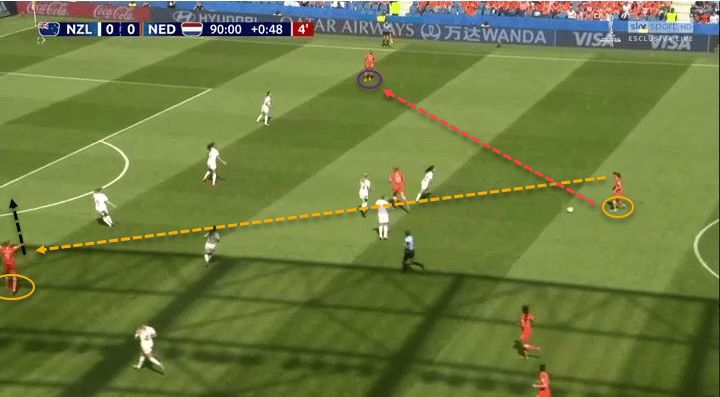
The above image exemplifies their link-up play. During the summer World Cup, many teams understood the Dutch style of play and tried to stop them by playing a low-block with a compact defensive structure. Given Van de Donk’s proficiency in passing, she often takes up positions to be able to scan the pitch and deliver accurate through balls to her teammates.
The graphic here illustrates just this. New Zealand are playing in a low-block but are trying to press and disrupt the Dutch ball carriers to push them back and return to their compact shape. As Van de Donk receives possession she lifts her head to look for openings and instantly sees Miedema in space asking for the ball.
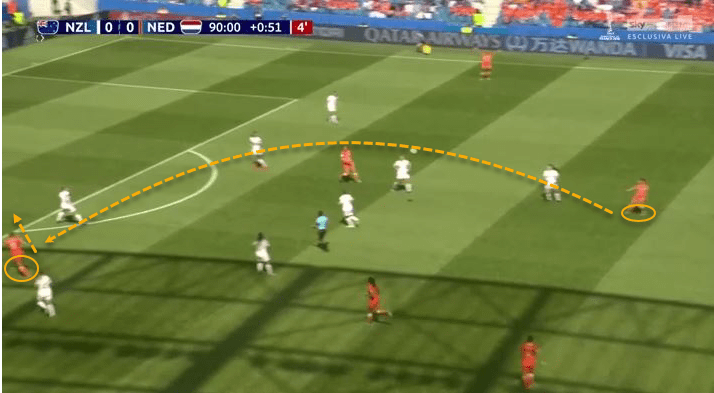
Many other midfielders would often take the safe route by playing a simple pass to the winger/full-back, however, Van de Donk’s confidence in her own ability makes her take more risks and play dangerous passes. Her long-ranged pass bypasses the Kiwis’ midfield straight to the Dutch striker, putting her in a better goal scoring position. This has also opened up a huge gap between the two New Zealand centre-backs allowing for a late run from midfield.
Defensive awareness & pressing
One of Van de Donk’s most noticeable and important traits is her off-the-ball work rate. During her time with the Netherlands at the World Cup, Van de Donk was often seen sprinting towards the opposition ball carrier looking to dispossess them and put the Dutch on a counter-attack.
Combined with her ability to press high makes her a modern number 8 or 10 that now requires more defensive discipline under most manager philosophies. This makes Van de Donk a valuable asset for Arsenal and the Netherlands giving them tactical flexibility.
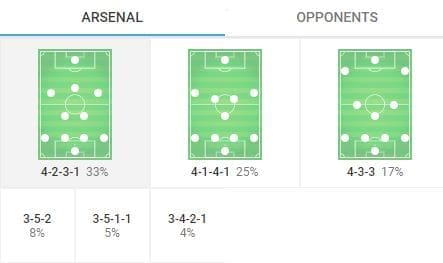
The Dutch midfielder plays in a very reactive manner keeping a close eye on where possession is and if she is in the vicinity looks to pounce on any loose balls or steals from the opponent. Her pace is a valuable asset to her arsenal allowing her to chase down and thwart counter-attacks.
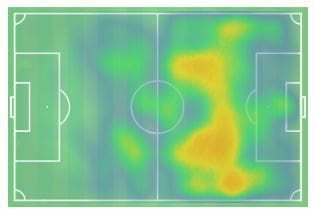
As the heat map above shows, Van de Donk patrols the attacking midfield area just outside the penalty area. Roaming this specific section of the pitch allows her to conserve her energy and make numerous smaller sprints to close down defenders and catch defences off guard without adequate protection from their deep-lying midfielders.
This also allows her team to play on the front foot and hold a higher line. Any managers looking to play a high pressing system with an active number 8 or 10 would hugely benefit from Van de Donk. France’s Gaëtane Thiney plays a similar role whereby she is tasked with supporting her midfield double pivot and provide an extra attacking body in attack. While she doesn’t have the goal scoring exploits or assist numbers, Van de Donk has become a regular goal scorer for club and country.
Her statistics make her case with 7.12 recoveries per 90 with 66.1% of them coming in the oppositions half including 3.39 interceptions per 90. This means she’s actively trying to make clean tackles higher up the pitch.
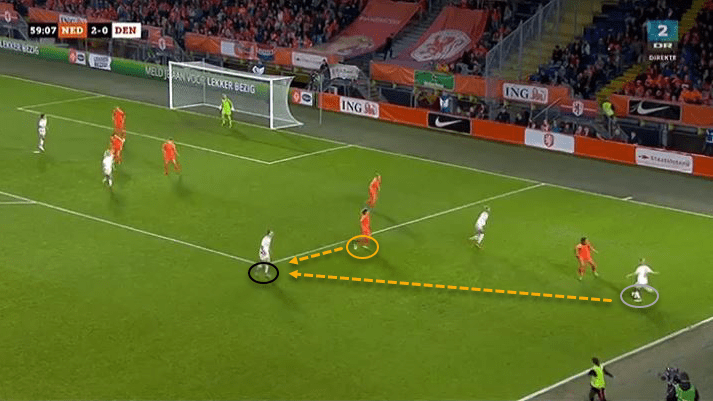
As the graphic above shows, Van de Donk patiently waits for the Danish attacker’s next move and looks to react as the pass is played towards the player nearest to her. Notice the distance between Van de Donk and the ball receiver, the player should have the advantage with the distance and space in behind.
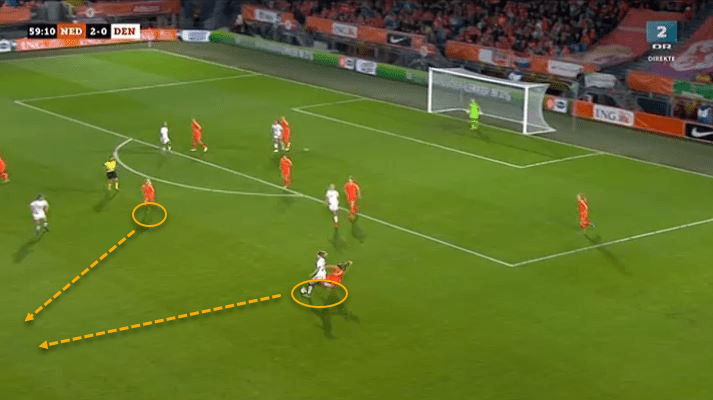
The Arsenal midfielder looks to close the gap between her and the attacker and manages to force her away from goal. The only option the Danish player has is to pass to her teammate in front of her which halts any momentum or risk a pass to the player on the edge of the penalty area. Van de Donk does not allow her either option and executes a perfectly timed tackle to dispossess her. Not only does she stop the Danish attack but push the Netherlands in a counter-attacking opportunity against an unorganised and insufficiently supported defensive line.
Best in the world?
As this analysis has shown, Van de Donk is a superb attacking midfielder with all the traits to become the best midfielder in the world. With such intelligent movement, positioning, and vision, combined as well with her defensive discipline, she is on course to light up Europe for another season. Arsenal are defending champions going into this season, aiming to defend their crown and tackle the behemoth that is Olympique Lyon in the Champions League. Van de Donk will be an integral part of any success Arsenal will have this season.

If you love tactical analysis, then you’ll love the digital magazines from totalfootballanalysis.com – a guaranteed 100+ pages of pure tactical analysis covering topics from the Premier League, Serie A, La Liga, Bundesliga and many, many more. Buy your copy of the August issue for just ₤4.99 here.

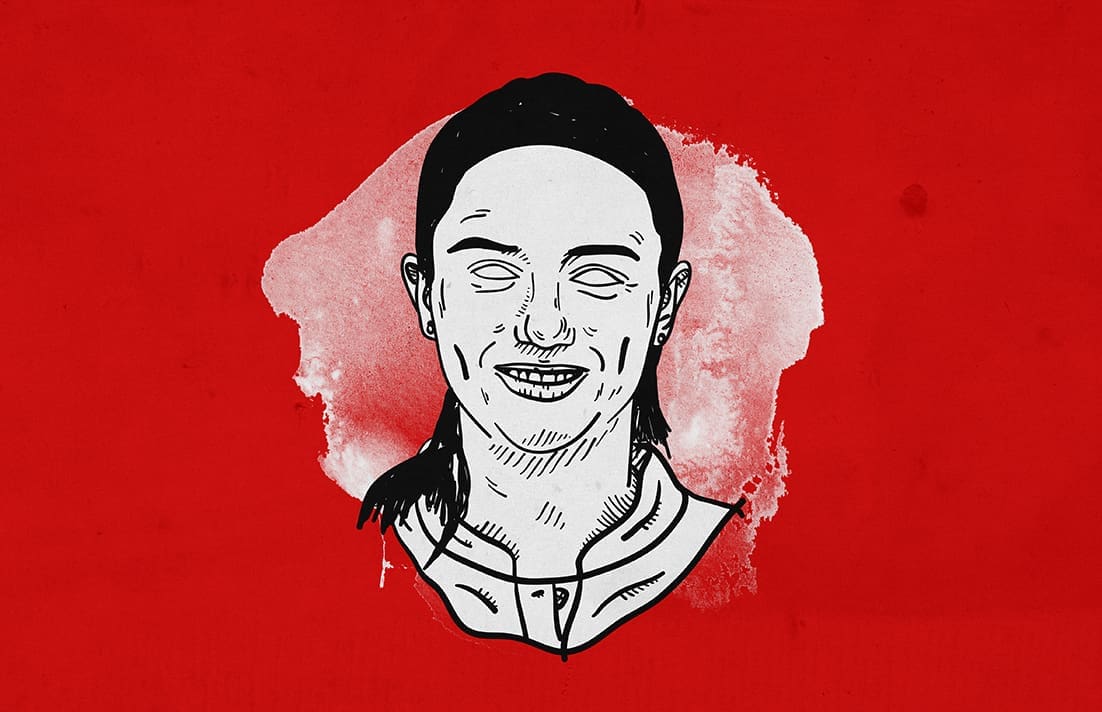




Comments